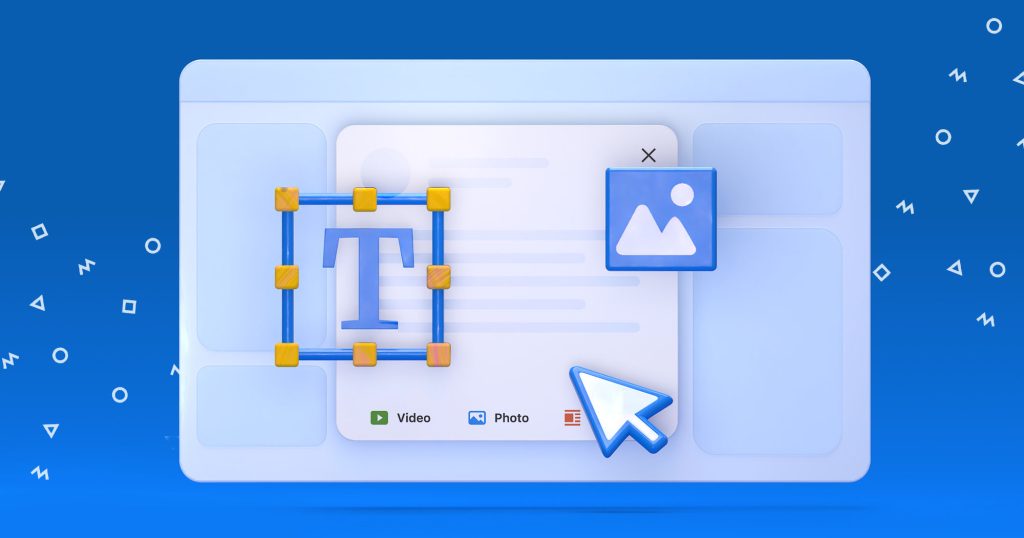We are glad to introduce the following interview in terms of Reply Q&A session that helps Reply know more about customers, how they use our application, create use cases and case studies and help more companies grow. Today we are interviewing Al Corchuelo, a former Marine Corps officer and Founder of RecruitLeaders company.
Could you start by telling us a little more about your background and what you do at RecruitLeaders?
Al: I established RecruitLeaders as a company on my own to basically recruit in a niche of cyber security. I’m a Marine Corps veteran, a retired Marine Corps officer and helicopter pilot, and I did a search with my current company that I also work for called Academy Recruiters. I wanted to do something that was more focused – not just recruit for anything and everything, but to focus on one area. I thought cyber security would be great, since that is such a growing industry.
I wanted to be an expert in that market, so I’m trying to work towards that at this moment. I try to find C-level executives, business development professionals, managers and cyber security “leaders” in the marketplace, in the industry, and trying to be a leader in this area of the recruiting space.
Okay, thank you. Could you tell us a bit about your e-mail outreach process – what it was like before you started using Reply, and what it’s like now?
Al: Well, before I would use – and I still do – but I would use almost exclusively LinkedIn. But as you probably know, LinkedIn has been incorporating some more stringent rules, so it makes it tougher to use LinkedIn for free. You have to pay for everything now, for a lot of different services that used to be free in past. So if you don’t buy a subscription that costs money, then you’re pretty much locked out of being able to reach out to those people who could be viable and potential candidates.
So what I did when I found Reply app – I actually learned about Reply app during a webinar for a group of which I am a part. The webinar mentioned Reply app as a useful tool. I guess the group had been testing Reply app for several months before I got on board, and the speaker really liked it because it’s a personal e-mail that comes from your own personal e-mail box (at least the recipient sees it as that), but it’s automated. So you do things a lot faster, but with a personal touch, which is something I like. When I started looking at it, I started using it right away, and I liked it because of those aspects; because I can do things faster, better, more efficiently, but also make it more personal.
I don’t like it when it becomes businesslike, I want it to be personal so they know, “Hey!” People when they feel like they’re being personally reached out to, they want to at least answer that person whether it’s negative or positive; whatever the case may be, they’re more apt to answer that person than just delete the e-mail outright without knowing him/her. That’s what I liked about Reply app, and it does build a little bit of a rapport with warmer candidates that you know. If it’s a cold call, just because of the personal nature of it and going into the person’s work e-mail inbox, then I think people are more apt to reply to that.
Yeah, you’re actually right. We have already realized that the perfect combination is mixing automation with personal touch. So this way you both can save your time and lots of work by not doing the monkey job, and at the same time you still treat your prospects really, really great. Okay, so – as far as your personal touch in your e-mails. How do you do this? Do you collect the information beforehand? Do you insert variables for making other sort of personalizations with reply e-mails?
Al: I use certain templates that were recommended by my working group within the recruiting group that I’m involved with. They came up with recommendations that I followed, and they seemed to be very successful. Just looking at my reply statistics and my open rates, it seems like the templates that I currently use work. All I do is, depending on the position, I change the position name or the company name, whatever have you – that’s all I do. But the thing is, I use a template that looks like it’s a personal e-mail from me to that person, and then I adjust it for the positions for which I am searching.
Okay, I see. Did you create the templates yourself, or did you maybe look for the basis on the web?
Al: No, the templates were recommended by my recruiting working group, so what I did was I took those recommendations and I applied them to myself. I started using them, and then I made them maybe a little more personal. The general recommendations were there, I used about 80% of it, and then I adjusted a word here or there, or whatever the case may be, just to make it more personal for me the way I would say something instead of somebody else saying something, so it sounds more genuine. That’s what I do – I try to be genuine in everything I do, so that’s what I did with the e-mail templates.
That’s great. Upon using Reply for the last couple of months, can you share some conversion or Roy, maybe the number of deals you closed, or the open and reply rate in your e-mail campaigns?
Al: Yes. As a matter of fact, I have currently, I guess, the highest reply rates. I have 17% for an Associate Project Manager Office Lead, which is basically a technical job with IBM, and I had a 26% open rate on that. Another one for another position within an IT company, User Engagement Team Lead (that’s the title of [the position]), I had a 15% reply rate with a 42% open rate. So I have a pretty good open rate, I have everything from 9-42% and a reply rate between 8-17%. So I don’t know, comparing those statistics with what other campaigns are doing from other recruiters, I don’t know. I think, though, those are pretty good numbers. The feedback I’ve gotten is that those are pretty good numbers, but I can’t have anything to compare with another recruiter.
Yeah. Actually, your open and reply statistics are quite fascinating, especially when it comes to the recruiting, which is a little bit different from our main target audience, sales people. It can be rather challenging because there is so much more information on the web about how to approach prospects if you’re a salesperson and not a recruiter. But yes, those metrics were really, really great. So, as for the time-saving – do you feel that you’ve invested the time to learn how to use Reply and now it pays off with the free time you have?
Al: Yes. I mean, I’m still working quite a bit in terms of the hours, but this has definitely saved me a lot of time. In order to get the work e-mails – those aren’t easily available unless you have the program to do so. In LinkedIn, most people put their personal e-mail in. If they have the contact information in there, they don’t usually put their business e-mail in there. So I send ‘strictly to business’ e-mails, because I know somebody will get it and they’ll look at it. They may not get to their personal e-mail, depending on how busy they are, until maybe on the weekend.
But if it’s in their work e-mail, they’ll say, “Hmm, okay.” And they’re sort of interested, or they’re at least curious. And they’ll give me a reply one way or the other, negative or positive, but at least they’ll look at it. So that’s why I think I have a higher reply and open rate for myself. The thing is, I try to get those work e-mails. I outsource; I have somebody who does that for me, and he does a very good job of getting those work e-mails to me, and all I do is upload them into my individual campaigns. That’s how I use it – I push ‘go’ or ‘run,’ and it starts the process.
That’s actually great. You mentioned the tools you used for both researching the e-mails yourself, and then outsourcing it to other person. What tools do you use, and which of them do you find to be the most useful for what you do?
Al: Well, I’m not sure of the exact programs that the person I utilize at times, when I ask him for some assistance, I’m not sure which ones he uses. But the one I use and I would recommend is something called E-mail Grabber or E-mail Prospector. If you go to www.emailgrabber.com, you can go through there and they have different programs. E-mail Prospector is what I use, and you just put in the first and last name and the company name, and it has its own patented algorithm that it uses to search for the work e-mail for that particular person. A lot of times it comes up with the correct one – it’s not 100%, nothing is – but a lot of times it comes up with the correct one, and if I was doing it myself, that’s what I would use.
That was another thing that was recommended, E-mail Prospector. But currently, for those who may be listening to this, it only works on Windows computers. So if you have a Mac, like I do, you sort of have to do a workaround, either using Parallels or another type of program in order to use Windows. I talked to the gentleman the other day, and he told me that it would be about six months or so before they have a platform that will be able to work on a Mac directly.
I see. And you told me that after using the E-mail Grabber, you do check to make sure that your e-mail is correct. Do you use certain tools to validate the e-mails after finding them?
Al: Well, that’s what I’m saying. The program validates the e-mails.
So it does both: finding and validating?
Al: It gives me a percentage. It has three or four different criteria, maybe five, and if it doesn’t look like it’s a good e-mail, it will put it down as a percentage or a different color as like, “Okay, this may only have a 20% chance of being correct,” but it’ll tell you that. But if it’s a very high probability of being correct, then it will come back with like a green, and it will say “At least 80-90% for sure that this is a correct e-mail for this person.”
So it will give you what it thinks based on its algorithm in the parameters that it uses, you know, whether the program thinks that it’s a valid email or not. And then it’s up to the user to use it or not, basically. It’s up to me to decide, okay, should I go with this, or not, or will it get kicked back?
So your personal margin rate to be confident in the email is about 80 to 90 percent, is that correct?
Al: Well I’d like to have those numbers, 80 to 90 percent, because that would improve my open-ended reply rate, obviously. Because if I have a bad email, then it’s obviously going to get kicked back, and I’ve had that plenty of times and so that doesn’t help me, so I want to make sure that I use a program — because I’ve used other ones like Data dot com and a couple others that I was not very satisfied with because it could never give me a good email, so why do I want to use that type of program if it’s, you know, if it’s not working for me? Then it’s not really useful, so I’m wasting my time. So Email Grabber seems to be the best one that I’ve used up to this point. There may be others out there, but I’m not familiar with them.
Okay, I see. By the way, after the interview, do you mind sharing the link to Email Grabber?
Al: Yes. It’s Emailgrabber.net
Okay, great.
Al: They’re navigating that website for the Email Prospector, which is what I use. That will give you — all you have to do is put your name and the name of the person that you know of and the company name and it will give you whatever it thinks the percentage is of it being a valid email or not. Work email, that is.
That sounds pretty awesome. And as for the schedule feature in Reply — so, for those of our listeners who do not know, it basically forms the delivery window and you can tell Reply when you would like your prospects to receive your email. Do you use this feature, and do you find it useful?
Al: Yes I do schedule out. For each campaign I have about five different times that I schedule emails, so I have like five different templates. They go out, you know, day one, and then every third or fourth day, and then a week later, and then the last one’s like two months later, the very last one. So I do spread it out. If somebody doesn’t reply the first time, then they get a different email a second time a few days later, but it’s personal again, basically saying that hey, I didn’t get any response from you, just wanted to make sure that the email didn’t fall through the cracks, you know, let me know if you’re interested. It shows that as a personal email from me. But again I use the same emails that I schedule out, I just change the position for which I’m recruiting in that particular campaign.
Okay, great, thanks for sharing. So basically we both know that there are two criteria of a successful email campaign. It should be very high quality lists that you have with the validating and the targeting of your prospects; and the email subject and email body that is written, you know, to engage with the prospects and make them reply to you. Apart from this, have you ever tested the A/B test feature in Reply? Just add in enough variant to your subject or email body to see which of the templates you have work better, and maybe experiment?
Al: I have not to this point but I am currently working on something that I will do. I’ve used strictly InMail feature on LinkedIn. And I’ve had, actually I’ve used the exact same email, the first template, that I used into that InMail. So I’ve incorporated the exact same features that I would use on the Reply app and used it in my InMail feature and I’ve actually gotten some success doing it that way. But I only have so many credits, like 120 credits, and I’m close to being complete with those.
As soon as that’s done I will again use that Email Grabber feature, Email Prospector, and go and use it for the ones who haven’t replied yet, and I plan to upload them into that campaign, make a new campaign based on the ones who haven’t. I’ve got about 130 or so people who have not replied and so I want to use it and use it with obviously the Reply app, and see how successful I am going that way, and using the A/B test. Because there is something I’m using right now with the A/B test, changing a few words here and there to make it happen, to see which one has more success. So I plan to use it, the A/B feature, for this new campaign.
Would you consider sharing the results of your A/B test in the future? So just the numbers, maybe the subject lines; you don’t actually have to reveal the whole email templates. Just to demonstrate how email testing can improve your campaign or help you test different options?
Al: Yes, I’d be more than happy to do that. I mean it’s a very simple thing. It’s not that difficult to share once I get the results.
And as a recruiter, like, as an owner of a recruiting service, do you often get cold emails yourself?
Al: Sometimes I do. On a daily basis, maybe a couple, two or three depending on — from different companies, I will get those. Yes, I do get them.
Just wanted to ask, that’s something we’ve noticed after working on the cold email automation for so long. Has your attitude to cold emails changed? For example, if I receive a cold email that has a really, really great subject, I do open it and I’m glad to receive it, especially if it has the email body just as greatly written and personalized. Do you have something like this, or wasn’t your attitude changed?
Al: My attitude is this: I’m not averse to cold emails. Like I said, if they’re written the way Reply app — in the way Reply app, I should say, recommends that I do, and I get something that’s similar or written in a personal way, I’m more apt to open it. But if it’s written as a blast email to everybody and you can tell that it’s a blast email, then I will quickly look at it and delete it. You know, just unsubscribe from that email list because I don’t like receiving spam. Nobody does.
But like I said, if it’s of a personal nature — I think it’s just human nature, and I think I understand people pretty well — and if it’s written in a personal way, no matter what the subject is, you know, I’m very thankful for somebody who is just sending me that information, or else I never would have received it. Because it could mean a new opportunity or something better for my career or whatever have you, a new product that I didn’t know about, whatever the case may be; but I’m definitely more apt to be receptive of that and I think people in general are more apt to be receptive to that type of email, a personal one. No matter what the product or what you’re selling, if it’s personal — people like personal, they don’t like cold.
Thank you very much for your time and for sharing your impressions and experience.
One last thing. I will be also sharing the link to your website. So if some of our readers, listeners would like to use your services, how do they do this? Do they simply go to the contact section?
Al: Yes. They can go on my website, and they can look at it; the contact information is there. They can reply a few different ways, scrolling down — it’s very easy to navigate through the website — and you can, you know, if they’re looking, if it’s an employer, or a client, I should say, looking for a recruiter. If it’s a client, he or she can reach me that way. And if it’s a candidate who needs help for a specific position, then he or she can reach me that way also. So I get them both. My email contact’s in there too, my phone number’s there, so they can reach me at any time, any way. Basically any way through the website or go down to the contact section too.
Okay, great. Thanks a lot, Al. I hope you have a great day and I hope your email campaigns will help you grow your business as much as you possibly want it to be. So thanks so much for sharing your tips.







![New in 2025: Reply.io Teams Up with Persana AI [+Live Webinar] New in 2025: Reply.io Teams Up with Persana AI [+Live Webinar]](https://reply.io/wp-content/uploads/persana.io_-1024x538.jpg)